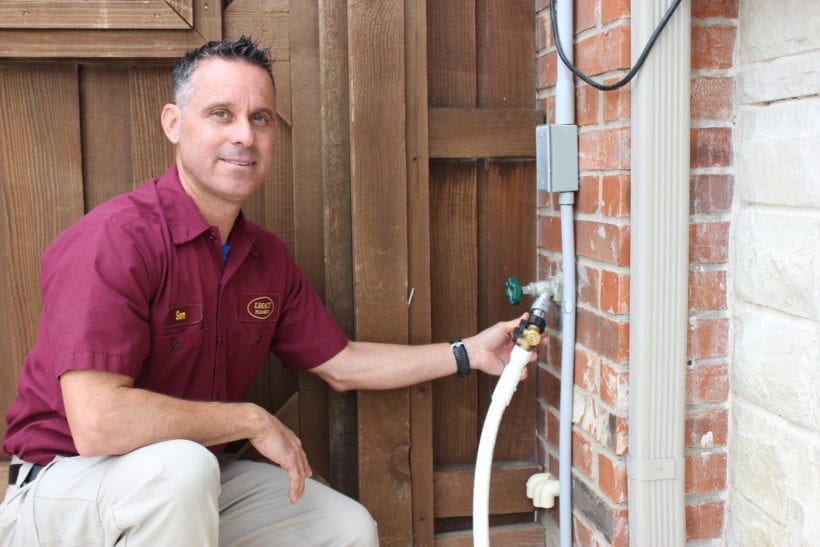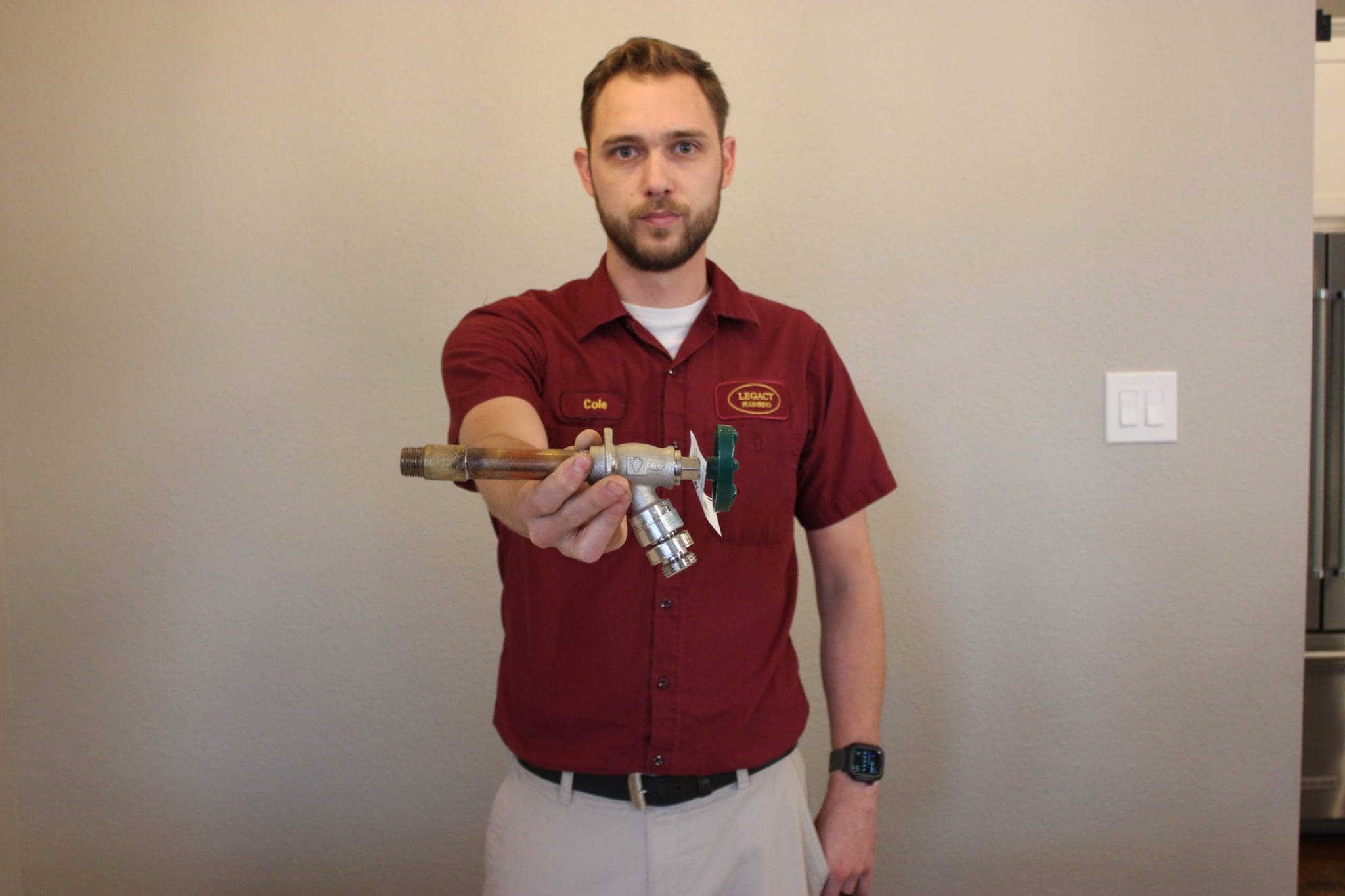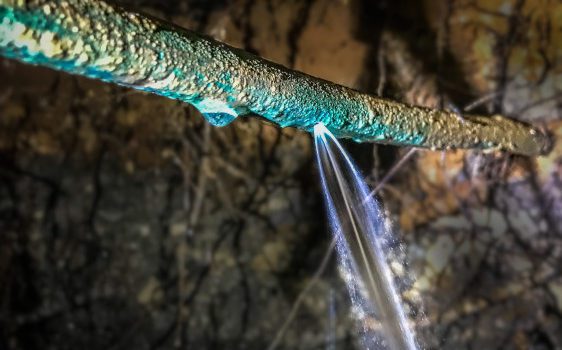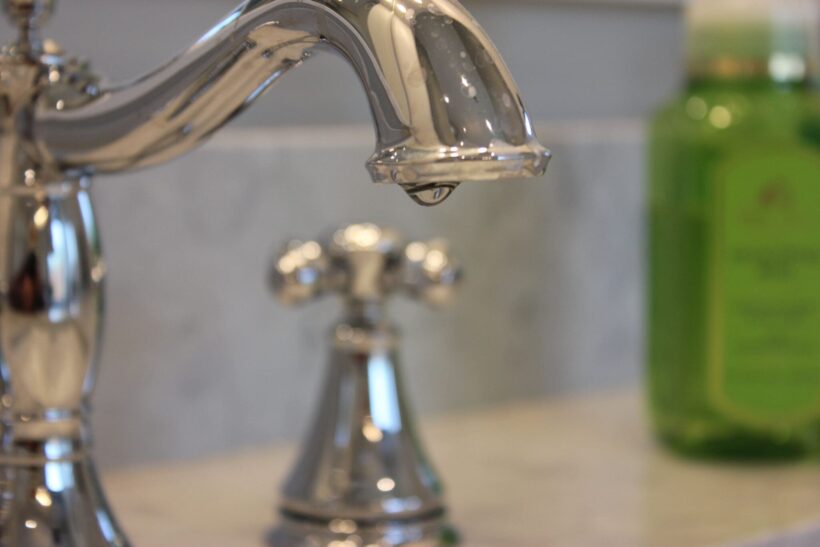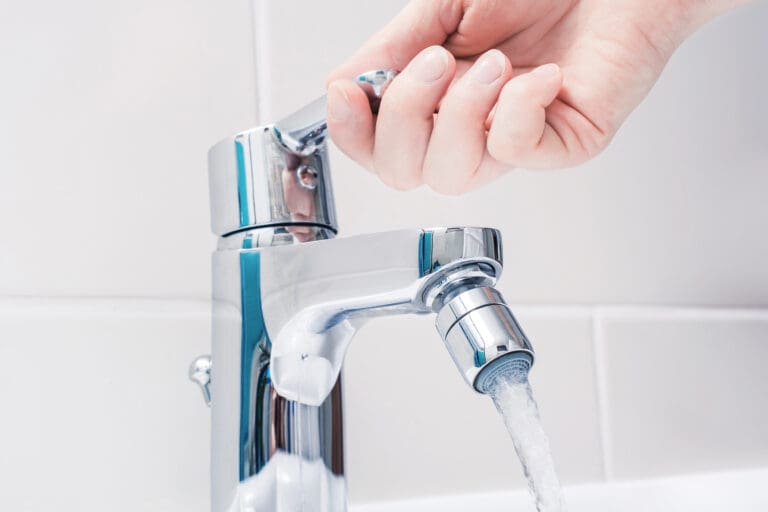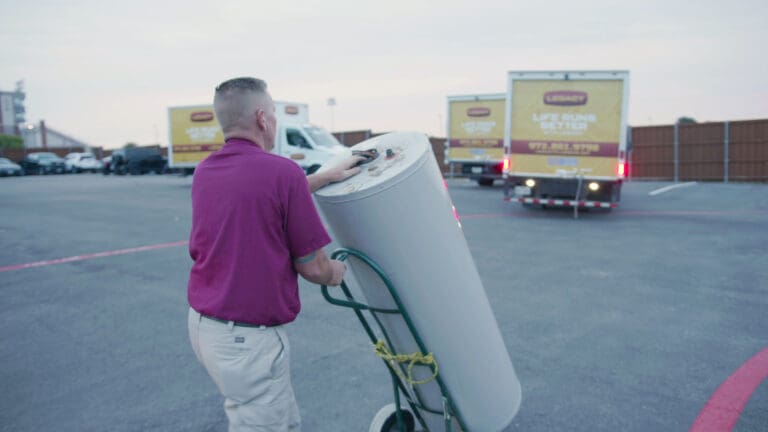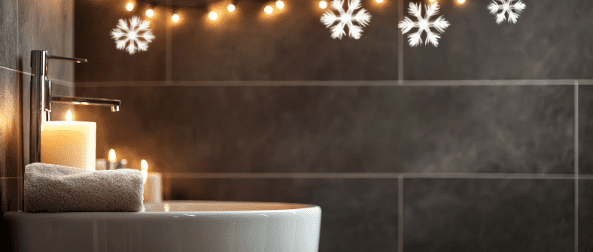Many people don’t realize that it can get really cold in Texas. The coldest temperature recorded in Dallas is -8 degrees Fahrenheit! In the North Texas area where we work, the temperatures can go from warm to freezing very quickly and stay that way for some time. As you can imagine, this poses a real risk to your plumbing.
Other parts of the country that are known for frigid Winters are better prepared to deal with these colder temperatures. Because Texas is so hot for much of the year, many people who are new to Texas don’t protect their plumbing and are caught unaware when it does get really cold.
One really common issue we deal with in our service area every year is outside hose faucets that are damaged by freezing temperatures. We call these Freeze Breaks. If you live in a North DFW city like Frisco or McKinney, read on! You’ll learn how these outdoor hose faucets work and how to prevent them from freezing in the Winter.
Frost Proof Faucets
The most common style of hose faucet installed on homes built within the last 30 years is called a Frost Proof faucet. Here is what they look like:
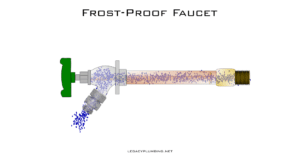
The copper water line comes up through the slab foundation into the exterior wall (PEX piping in newer homes usually comes down from above). Once at the right height, a fitting is installed (often called a drop-eared 90 or drop-eared ell) fitting. This is really just a FIP threaded connection that has built-in tabs that are designed to secure it to some wood backing. Once it is secured to the wall, the entire frostproof faucet assembly screws into this fitting.
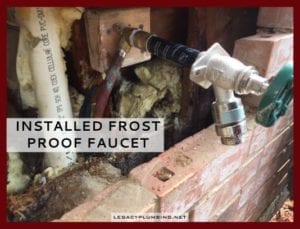
The faucet sticks out from the wall a few inches, but it actually extends back into the wall about twice as long! The most common frostproof faucets around here are the 4” wall thickness length types (although other standard lengths such as 2” and 6” standards are also found).
The water does not shut off at the front where the handle is. When you turn the handle to shut the water off, it turns a long stem with a washer on the back side of it. That is where it shuts the water off, back inside the wall where it stays warmer. Although there are other styles such as quarter-turn faucets, this is the most common style.
When the rubber washer shuts off the water in the back of the faucet, the long tube that the stem travels through has all the water drain out of it. It’s now protected from the cold! Well, almost…
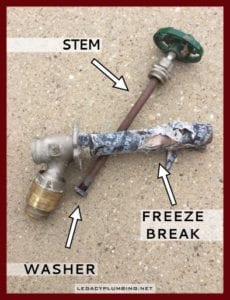
Freeze Breaks
If you leave anything connected to the outlet of the faucet, then that will prevent the water from draining out. A lot of people leave the hose connected to the faucet all the time. Or, they connect multiple hoses to the faucet with a wye splitter (Y splitter). Sometimes, grass watering is automated with a timer that can be installed to the faucet or filling the pool is made easier with a dedicated fill line that attaches to the faucet. If anything is connected to the faucet, the whole faucet can stay full of water even after it is turned off. Guess what happens when the temperature starts to drop…
When water freezes, it expands. The water will first start to freeze toward the front of the faucet where it’s the coldest. When that freezes, it effectively seals off the only path that the remaining water could escape from. As the water continues to freeze and expand toward the back of the faucet, it continues to build up more and more pressure. The pressure will increase until the copper faucet tube cannot take it anymore and ruptures.
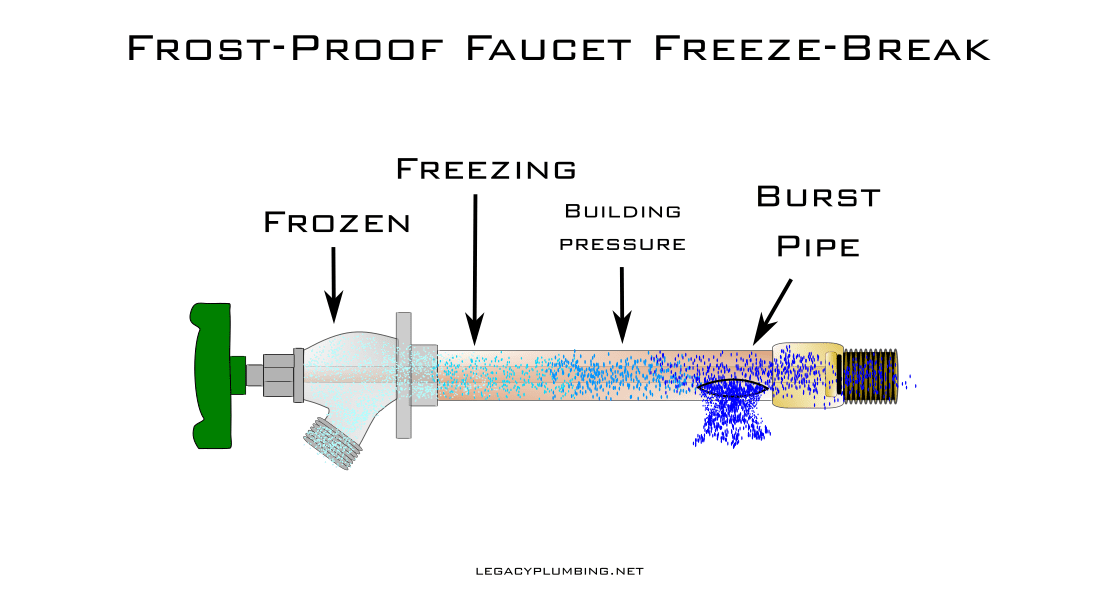
Remember, all this is happening while the faucet is turned off. This break and the frozen water are all past the point where the water actually shuts off to the faucet. So it doesn’t start leaking or flooding right away. Once the tube ruptures and relieves the pressure, nothing else happens. Eventually, when the weather warms up and the water melts… nothing happens. The faucet is still shut off.
Finally, you go to use the faucet in the springtime. This is when it gets bad. As soon as you turn the faucet on, water will fill up the faucet body and begin to spray out of the hole that was created. Most of the time, this is far enough back inside the wall that you can’t see it right away.
This water spraying inside the wall will either go back toward the interior of the home and get the floor/wall wet on the inside or it will go out toward the brick and you’ll see it coming out of the drainage holes (weep holes) at the bottom of the brick wall.
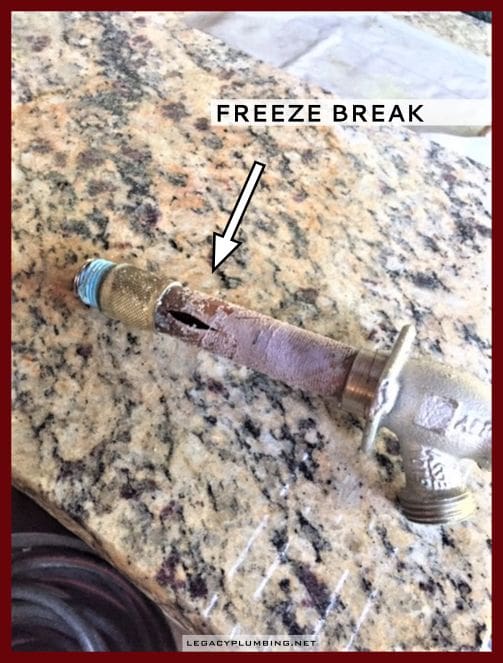
VACUUM BREAKERS
We’re going to stop for a moment and talk about Vacuum Breakers. These safety devices do not protect your faucet from freezing, as some people think. They protect your water from contamination instead. Here’s how that works:
Much of plumbing code deals with the protection of the potable (drinkable) water system supplied by the municipality from contamination. The entire system and all faucets have to be designed in such a way that there is no possibility of “backflow” or “cross-contamination”. Once water leaves the fixture and is potentially contaminated, it should never be able to flow back into the system.
This, unfortunately, has happened many times in the history of modern plumbing and resulted in sickness and even death. As a result, different plumbing codes have developed to prevent this from happening. Because outdoor faucets are designed to be connected to by a hose, there is a high risk of backflow at this point. The hose could easily be filling a pool or left running while laying in a puddle of muddy or pesticide-contaminated water.
If the city water supply was shut down for maintenance, the drop in pressure could easily siphon this contaminated water back into your home’s system and pollute your drinking and washing water. Even worse, it could flow back into the city’s system and contaminate the whole neighborhood!
This is why these outdoor hose faucets are required to have a vacuum breaker installed. It is a little mechanism that is either installed on the faucet outlet or designed to be on the inside of the faucet itself. Whenever there is a negative or suction pressure instead of the normal positive supply pressure, a diaphragm opens up and the vacuum breaker will draw in air from the atmosphere instead of the dirty water from the garden hose.
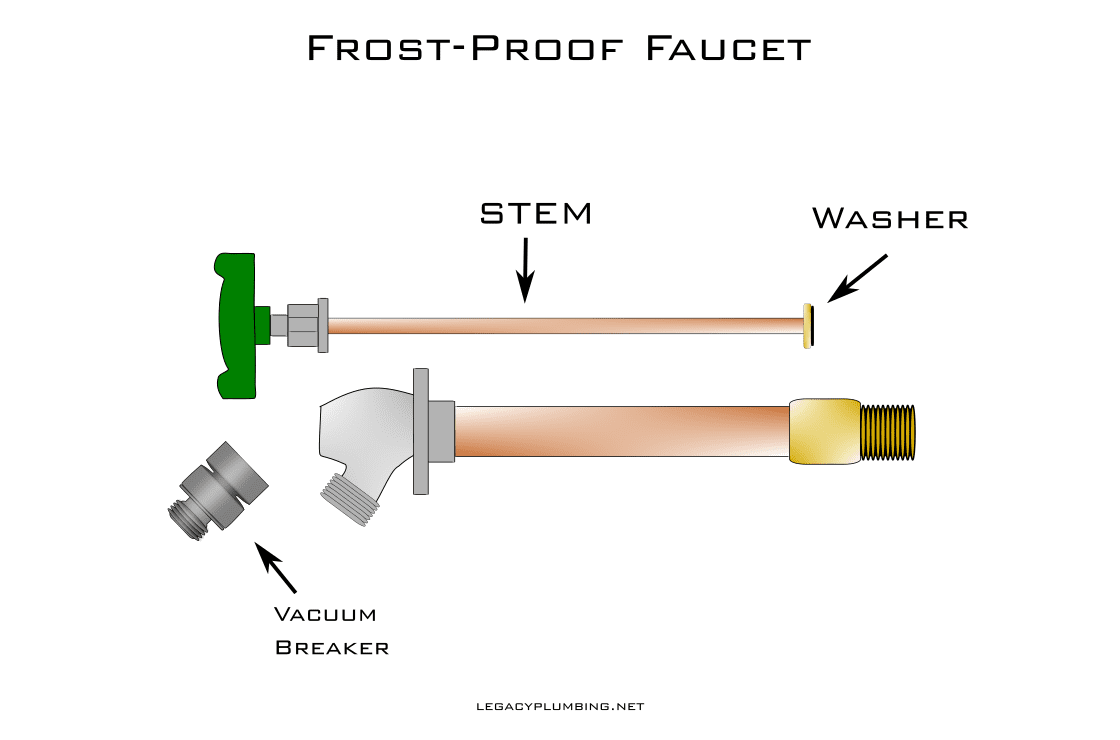
HOW TO PROTECT YOUR FAUCETS
DON’T leave the faucet under constant pressure. The vacuum breaker and the faucet itself isn’t designed to be left under pressure 24/7. Most manufacturers say that if the hose faucet is left under pressure for more than 12 hours, it voids the warranty. Many people want to hook up irrigation timers or automatic pool fillers (pool fill valves) to their outdoor faucet. If you do this, it will put more wear and tear on the faucet than it was designed for, and you will probably have to replace the vacuum breaker or the entire faucet sooner than you would’ve had to otherwise.
DO make sure that you disconnect everything from the faucet when the weather turns cold and there is the threat of freezing. Remove the “y splitter”, remove the hose, remove the pool filler, remove the irrigation timer. This simple step is the key to preventing your faucet from being damaged.
Extra Tips
Know your faucets: Most faucets that are in our service area are made by a company called Arrowhead Brass. You can learn more about them at their website. They are, by far, the most widespread faucet installed around here (particularly their 486 series). Another somewhat common faucet (especially in Plano, TX) is made by Woodford Brass. Arrowhead Brass has put out a helpful PDF with more information about their faucets. You can read it here.
Keep up with maintenance: Check out our article on Spring Maintenance Tips! It goes into detail on what to do during the Springtime when you are turning on your outdoor faucets for the first time and don’t know whether they are leaking or not.
Buy a faucet protector: You can buy foam outdoor faucet covers from your local home improvement store or online very inexpensively. If your faucet wasn’t installed with the proper downward slope and retains a little water, these covers will give it a better chance of not freezing. Besides, if you remember to put them on every Winter, it will be a good reminder to make sure everything is disconnected.
Call a professional: If your faucet is broken and you need help getting it fixed, give us a call! Our team of licensed plumbers will make sure the job is done correctly and answer any questions you might have.
